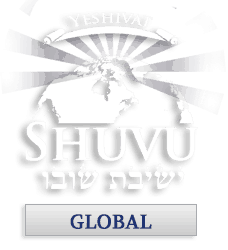שָׁל֣וֹשׁ פְּעָמִ֣ים | בַּשָּׁנָ֡ה יֵֽרָאֶה֩ כָל־זְכ֨וּרְךָ֜ אֶת־פְּנֵ֣י | יְהֹוָ֣ה אֱלֹהֶ֗יךָ בַּמָּקוֹם֙ אֲשֶׁ֣ר יִבְחָ֔ר בְּחַ֧ג הַמַּצּ֛וֹת וּבְחַ֥ג הַשָּֽׁבֻע֖וֹת וּבְחַ֣ג הַסֻּכּ֑וֹת וְלֹ֧א יֵֽרָאֶ֛ה אֶת־פְּנֵ֥י יְהֹוָ֖ה רֵיקָֽם: אִ֖ישׁ כְּמַתְּנַ֣ת יָד֑וֹ כְּבִרְכַּ֛ת יְהֹוָ֥ה אֱלֹהֶ֖יךָ אֲשֶׁ֥ר נָֽתַן־לָֽךְ:
Three times in the year, every one of your males shall appear before the Lord, your God, in the place He will choose: on the Festival of Matzoth and on the Festival of Weeks, and on the Festival of Sukkoth, and he shall not appear before the Lord empty-handed. [Every] man [shall bring] as much as he can afford, according to the blessing of the Lord, your God, which He has given you.
Deuteronomy 16:16-17
At the end of this week’s Torah portion, there is the commandment for the gathering of the children of Israel at the Temple. This gathering of all of Israel is to occur three times a year, at Pesach, Shavuot, and Sukkot.
It is interesting to note that Israel is not commanded to gather at any other times. There is no command to gather on Yom Kippur. There is no command to gather on Rosh Hashanah. There is no command together on Shabbat. The mitzvah is to gather specifically on Pesach, Shavuot, and Sukkot.
When Israel gathers for these festivals, the men are required to bring an offering. This offering is discussed at length in the Talmud, tractate Chagiga. Chag is a Festival, Chagiga is the festival offering. On the morning of the first day of these festivals, all men would come to the Temple and present their sacrifice. The sacrifices would be slaughtered, dressed, and either roasted or stewed. Then it would be returned to the offeror to be eaten in their homes as a joyous celebration for all of Israel. This celebration would inaugurate the festival for every house of the children of Israel.
During Pesach, the primary source of meat at the Seder table was the Chagiga, not the Pesach. With millions of people in Jerusalem for the festival, each household would have dozens of people in it. Each household brought one Pesach, one Passover Lamb offering. However, approximately half the people in the household were men and boys. Since the men were required to bring a sacrifice, there was a lot of meat that the Seder table.
The eating of the Pesach, the Passover Lamb, is required for all Israel. To assure that everyone had a piece of the Pesach, the Pesach was reserved and kept separate from the meat of the Chagiga. At the end of the Seder, a piece of the Pesach was placed on a piece of matzah and handed out to everyone at the meal. Once everyone was given their required piece of the Pesach, the blessing was recited and the Pesach was eaten. This piece of matzah with the Pesach was called, in Greek, the Afikomen. The reason this ceremony was performed was to assure that everyone ate the Pesach, and it did not get confused with the Chagiga.
